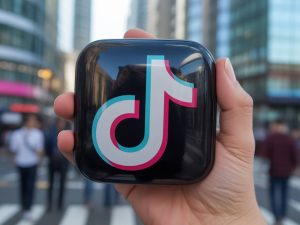The 4 types of search intent and how to optimize content for each

The 4 types of search intent and how to optimize content for each
Understanding Search Intent: The Missing Link in Your SEO Strategy
If your content isn’t matching the intent behind a search query, it won’t rank — no matter how well-optimized it is technically.
You can have the perfectly keyworded H1, lightning-fast loading time, mobile responsiveness out of a Google dream — and still stagnate on page 3. Why? Because you’re not speaking the same language as your audience. Search intent is that language.
In this guide, I’m breaking down the four types of search intent, how to identify them, and how to optimize your content to align perfectly with what users (and Google) expect.
What Is Search Intent (and Why You Should Care)
Search intent, or user intent, is the reason behind a search query. It answers the question: “What is the user really looking for?”
Understanding this helps you fine-tune your content structure, tone, format, and CTAs (calls to action), so the content doesn’t just drive traffic — it drives conversions and engagement.
The 4 Types of Search Intent
Most queries fall under one of these four categories:
- Informational: The user wants to learn something.
- Navigational: The user wants to find a specific site or page.
- Transactional: The user is ready to do something (often make a purchase).
- Commercial Investigation: The user is comparing options before buying.
Let’s unpack each type — with examples and specific content optimization tactics you can apply right now.
Informational Intent: Feed the Curiosity, Own the Authority
Think of queries like:
- “How does SEO work?”
- “Why is internal linking important?”
- “Best SEO tools for beginners”
They’re not looking to buy anything — yet. They’re here to learn.
What to Create
- Comprehensive blog posts
- Guides and tutorials
- YouTube explainer videos
- FAQs (especially for featured snippets)
Optimization Tips
- Target question-based keywords and long-tail queries (often found via People Also Ask or AnswerThePublic).
- Use clear headings that reflect users’ sub-questions.
- Employ visual elements like diagrams, screenshots, or short videos when relevant.
- Structure content for skimmability — use bullet points, short paragraphs, and summary boxes.
Example in Action
Let’s say you’re optimizing a post titled “What is link building?”. Instead of jumping into technicalities, start with a high-level definition, lay out the benefits, then dive into types and strategies. Add a diagram showing how backlinks pass authority. This content satisfies user curiosity and positions you as a trusted resource.
Navigational Intent: Be the Shortcut
These users know where they want to go. Queries sound like:
- “Ahrefs login”
- “Moz blog”
- “Nike Air Max homepage”
Your goal? Be visible when users search specifically for your brand — and make it seamless for them to find exactly what they want.
What to Create
- Well-structured homepage and product pages
- Landing pages with branded terms
- Branded FAQ pages (especially useful for local SEO)
Optimization Tips
- Ensure your brand name is optimized across all key pages.
- Use proper schema markup (Organization, SiteNavigation, Breadcrumb).
- Optimize your site links and navigation structure.
- Ensure your domain and branding appear accurately in search via meta tags and favicon.
Example in Action
If someone searches “SEO1Dollar site audit tool,” you want an optimized landing page that ranks at the top and gets them there in a single click — not buried under blog archives. Also, make sure branded queries return your social pages, GMB profile, and help desk portals, not forums or competitors talking about you.
Transactional Intent: The Money Pages
These searchers want to take action — subscribe, sign up, download, or buy. Examples:
- “Buy Ahrefs subscription”
- “SEO course with certification”
- “Hire SEO consultant Paris”
This is where the money lies — literally. But if your content is too fluffy, too long, or too unclear here, you’ll scare conversion-ready users away.
What to Create
- Sales pages with clear UVPs
- Product pages with pricing tables
- Free trial sign-up pages
- Powerful CTAs integrated with forms/paywalls
Optimization Tips
- Use direct copy — no jargon, no guessing games.
- Emphasize benefits, not features. “Rank faster” beats “Includes 5 dashboards.”
- Include trust signals, testimonials, and third-party reviews.
- Speed matters: these pages should load in under 3 seconds. Period.
Example in Action
Imagine you offer a downloadable SEO checklist. Your page title and meta description should scream usefulness and urgency: “Download This Proven On-Page SEO Checklist (PDF, Free)” — not “SEO advice plus strategies etc.” Keep the form short (name + email max), and have a CTA like “Send me the checklist” instead of “Submit.”
Commercial Investigation: The Crossroads Before Conversion
This type of intent is often misunderstood. These users are close to transacting but need comparisons, reviews, and social proof.
- “SEMRush vs Ahrefs”
- “Best SEO plugins for WordPress”
- “Top-ranked SEO agencies in Berlin”
This is prime time to steer users toward your offer by showcasing why you’re the best choice — without sounding like a salesperson.
What to Create
- Comparison pages (“vs” style)
- Round-up posts (“Top 5 tools…”)
- In-depth reviews and case studies
- User-generated content and testimonials
Optimization Tips
- Use structured data (Product, Review, AggregateRating) to boost CTR.
- Be honest: include pros/cons or trade-offs (users will trust you more).
- Add comparison tables (Side-by-side features, pricing, support).
- Include intent-aligned CTAs (“Start free trial,” “See pricing,” or “Compare plans”).
Example in Action
Say you’re writing a “Best keyword research tools” article. Don’t list your tool first just because it’s yours (unless it’s honestly the best). Instead, break down each option by use-case: best for beginners, best for large teams, best for local SEO, etc. This positions you as fair and helpful — and that builds trust.
Finding the Right Intent Behind a Keyword
This is where tools come into play. Here’s how I typically determine the search intent of a keyword:
- Google the keyword: What types of pages rank on page 1? Blog posts = informational; product pages = transactional; comparisons = commercial.
- Look at modifiers: “Buy,” “deal,” and “subscribe” signal transaction. “How,” “what,” “why” signal information. “Compare” or “best” indicate investigation.
- Use tools like Semrush or Ahrefs that can show SERP features and search patterns (e.g., whether the query returns reviews or shopping ads).
If in doubt, default to what the SERP is rewarding. Google has already figured it out — you just have to look.
A Final Thought
Traffic without relevance is noise. But when your content directly matches searcher intent, you don’t just climb the SERPs — you start owning them.
If you’re building your content strategy in 2024 and beyond, aligning with intent isn’t optional. It’s the blueprint. And whether you’re writing a how-to post, optimizing a product page, or building a comparison table — intent gives you the map.
Skip it, and your content wanders. Master it, and your content sells.





